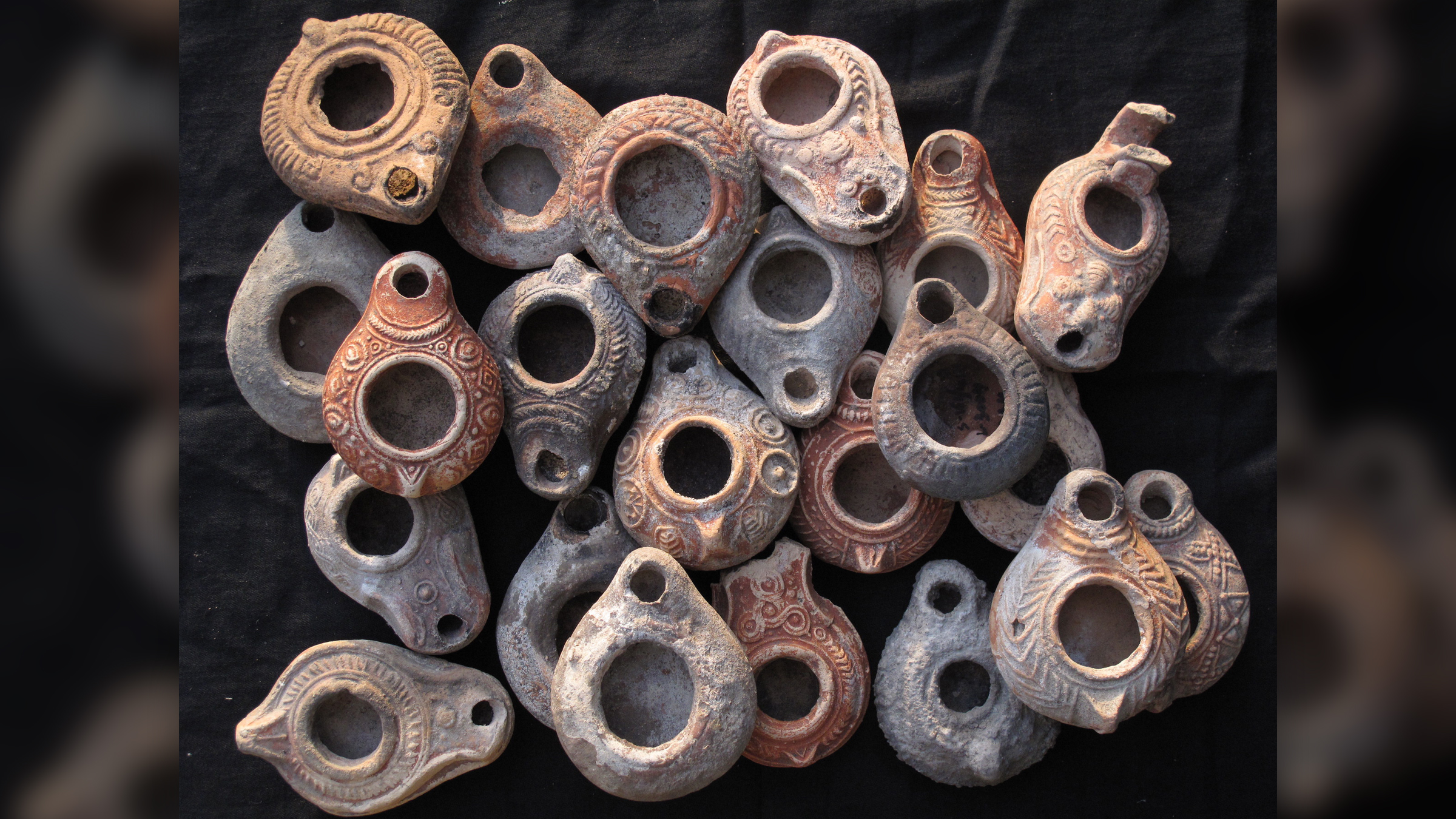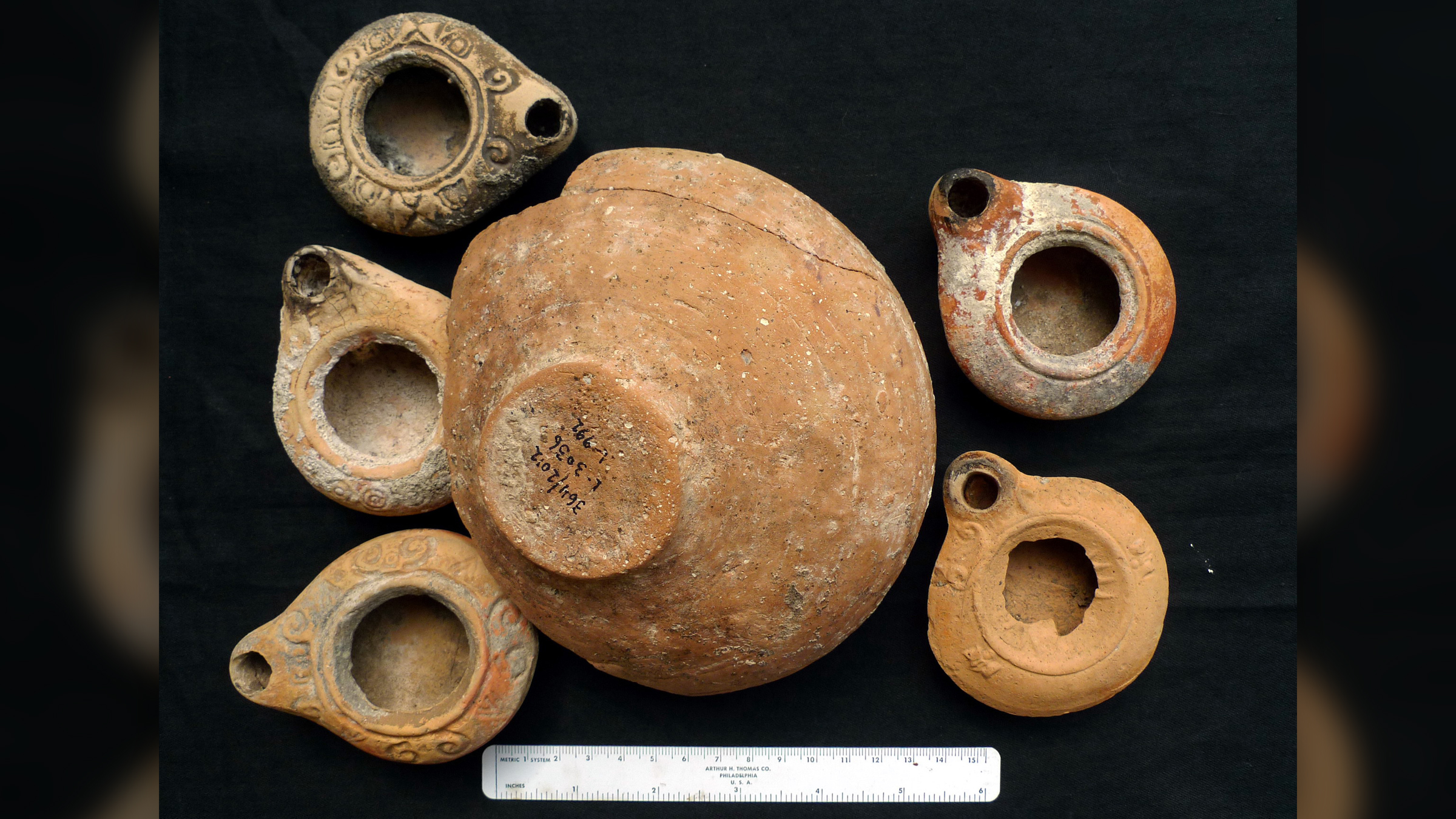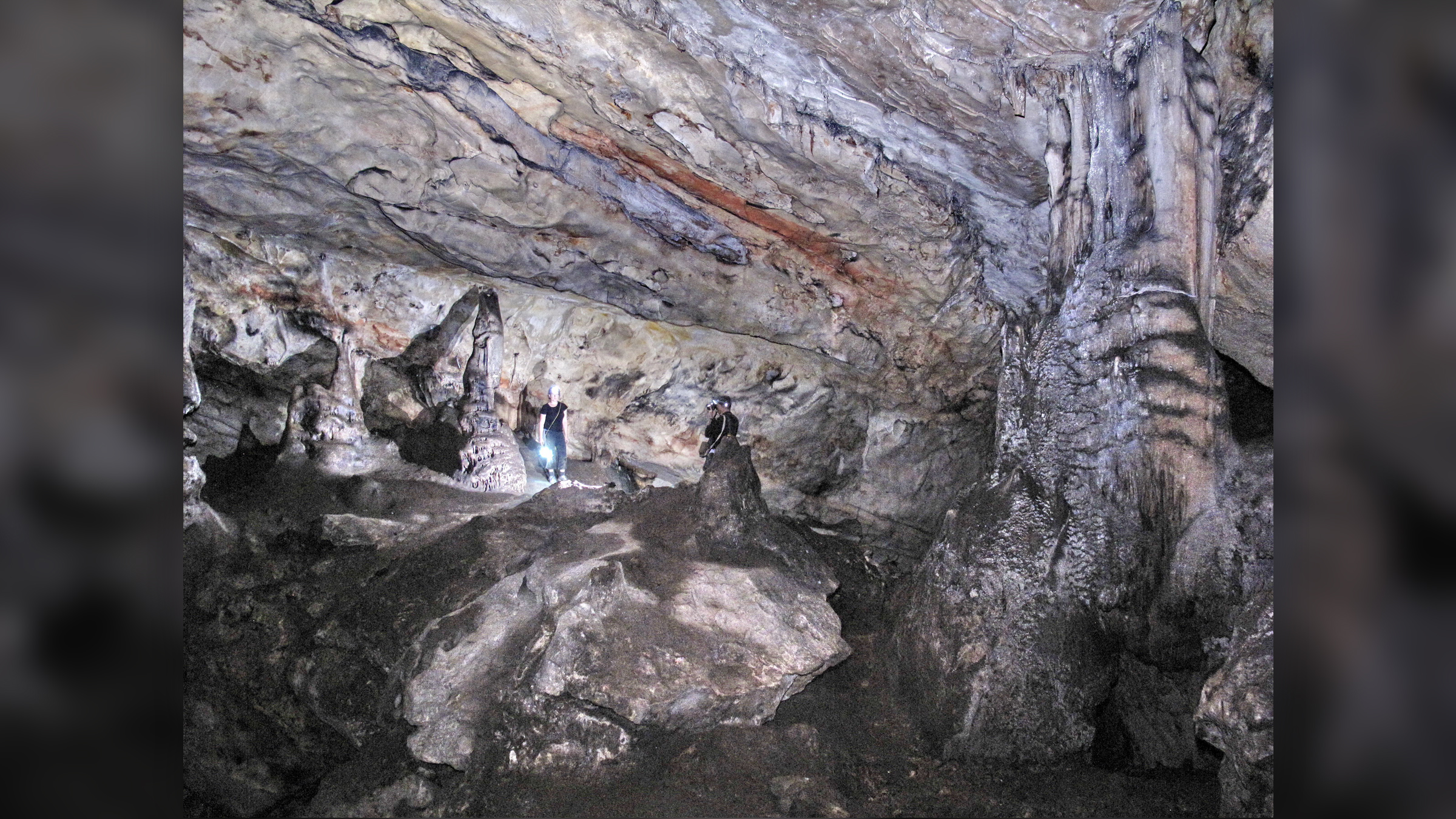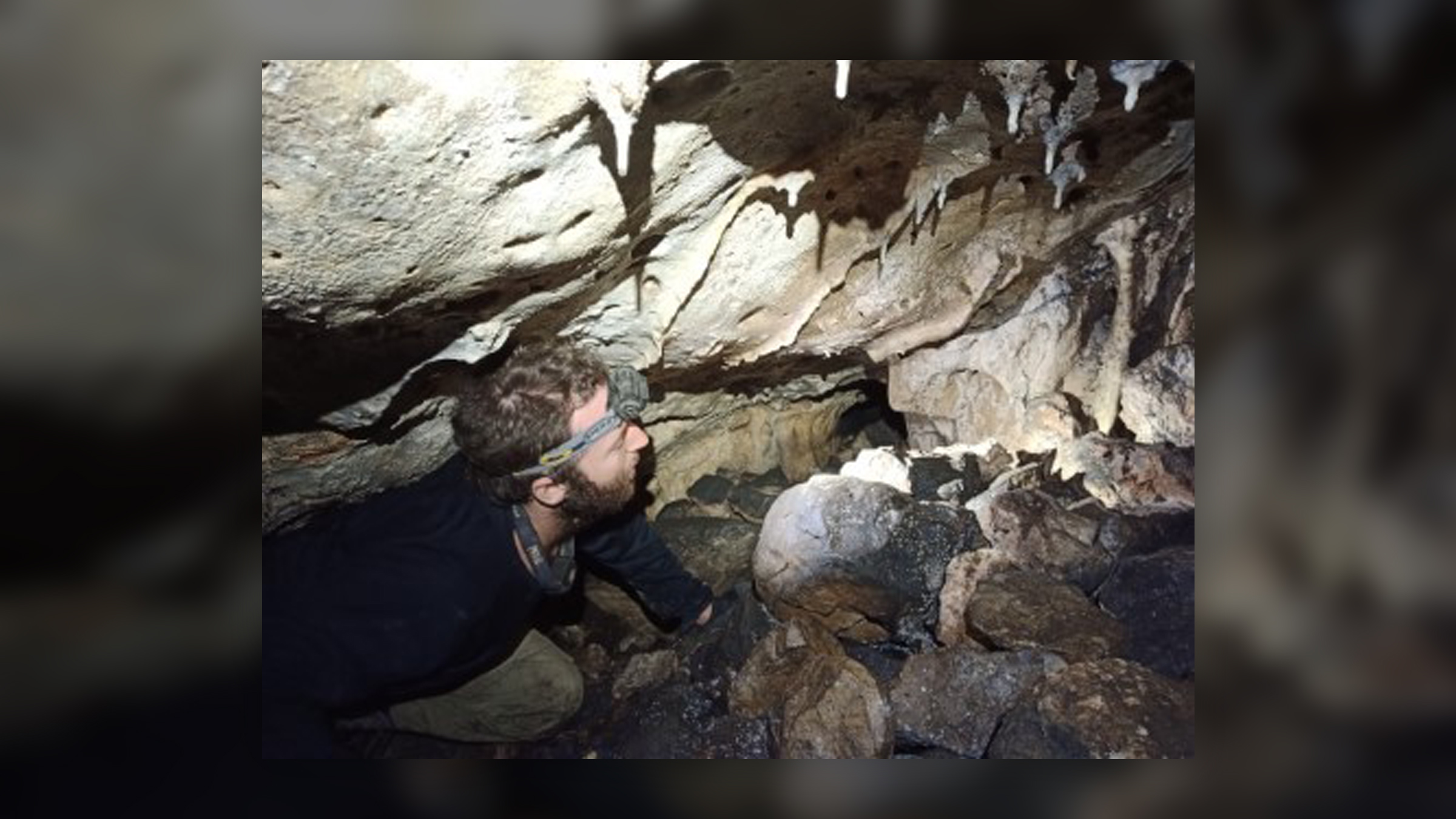Evidence of Roman-era 'death magic' used to speak with the deceased found near Jerusalem
Researchers think the morbid practice originated with pagan people who settled in the region after the Romans drove out the Jews.
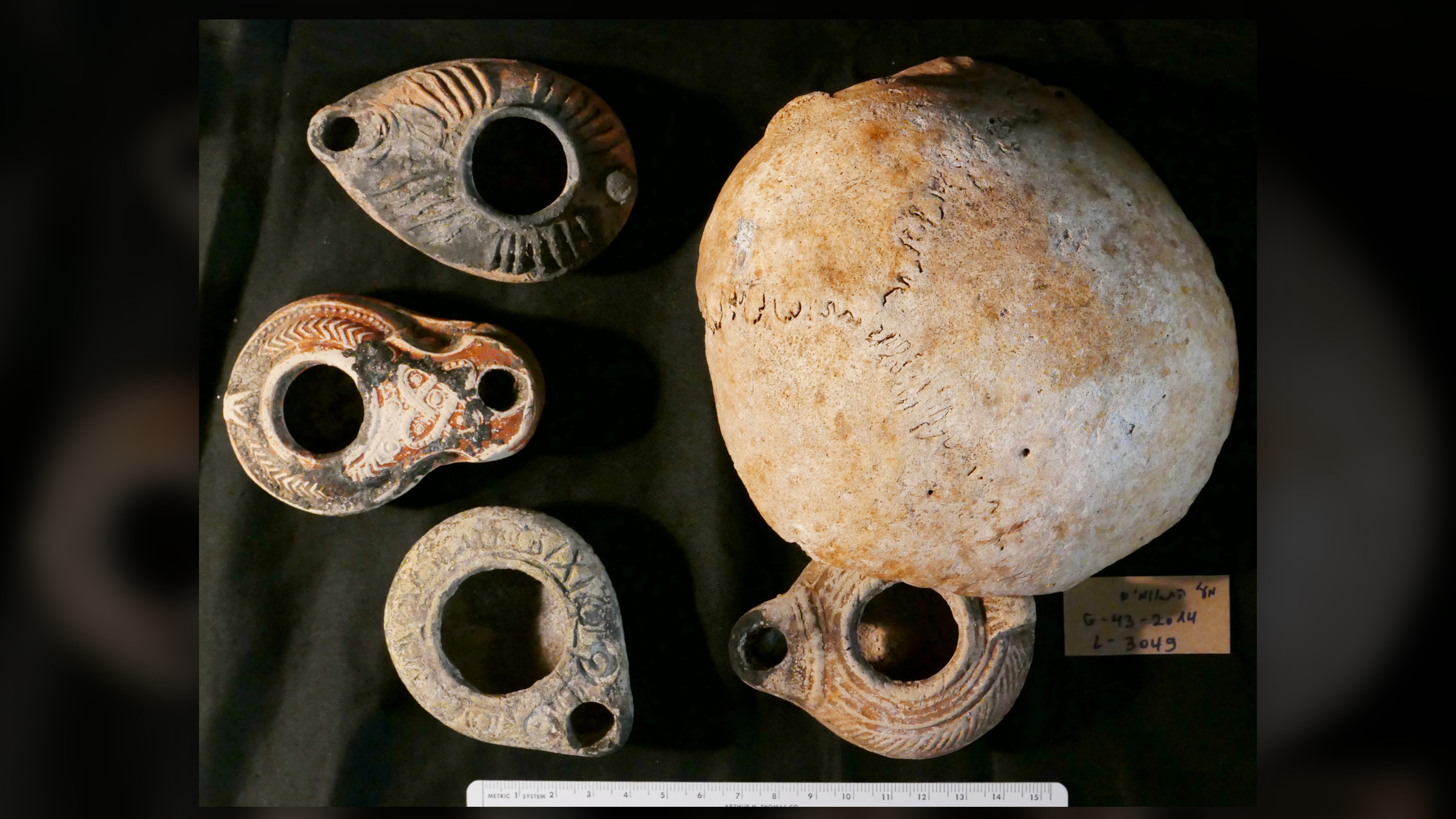
Ancient human skulls, oil lamps and parts of weapons hidden in a cave near Jerusalem are signs the site was used in the Roman era for attempts to speak to the dead — a practice known as necromancy, or "death magic" — according to a new study.
Based on the styles of the artifacts, the researchers think the morbid rituals were carried out at the Te'omim cave, about 20 miles (30 kilometers) west of Jerusalem, between the second and fourth centuries A.D.
According to Boaz Zissu, an archaeologist at Bar-Ilan University in Israel, most of the Jewish people who lived in the region had been eradicated or driven away by the ruling Roman Empire after the Jewish rebellion known as Bar Kokhba revolt, between A.D. 132 and 136.
The Romans then repopulated the region with people from other parts of their empire — likely from Syria, Anatolia and Egypt, Zissu said.
Related: Biblical scroll found in 'Cave of Horror' in Israel
"A new pagan population arrived in what had formerly been Judea, but was now Syria Palaestina," Zissu told Live Science. "They brought with them new ideas, new customs, and apparently the idea of necromancy."
Zissu is an author, with archaeologist Eitan Klein of the Israel Antiquities Authority, of a new study published July 4 in the journal published in the Harvard Theological Review. It describes the items discovered in the cave: more than 120 oil lamps, ax and spear blades, and three human craniums.
Get the world’s most fascinating discoveries delivered straight to your inbox.
Speaking with the dead
The vast Te'Omim cave has been visited by people since prehistoric times, and Jewish rebels used it as a hideout from the Romans during the Bar Kokhba revolt.
During the excavations, the researchers discovered three hoards of gold and silver coins from that time. A seam of rare calcite alabaster rock deep within the cave had also been quarried at some point, perhaps to create valuable artworks.
The styles of the oil lamps and some hidden coins suggest the cave became a place for necromancy when new arrivals to the area brought their traditional rituals with them, he said.
Necromancy was considered evil and often banned within the Roman Empire. Still, many ancient cities were near secret "oracle" sites where people believed they could speak to the dead. The cave became one such place.
"There they found perfect conditions," Zissu said. "it's a bit remote, but not so far from the main road; it's deep, but not very deep; and it has a deep shaft at the end that they regarded as a connection to the underworld."
Ancient rituals
The lamps, human craniums and parts of weapons are lodged in crevices within the huge cave, often so far back that the researchers needed long poles with hooks on the end to retrieve them. Ancient people likely placed them there with poles, Zissu said.
The crevices are too deep for the oil lamps to have cast much light, and researchers first thought they were artifacts of Chthonic worship — rituals associated with underworld spirits.
But the craniums, also secreted in the crevices, suggested the real purpose was to try to speak to the dead, who were supposed to be able to foretell the future, Zissu said.
Bones from individuals were sometimes used in an attempt to make contact with that person after their death, and the flickering of flames could be interpreted as their messages from the underworld, the study authors wrote.
"This cave provides important evidence attesting both the diversity of religious practice in the Roman period, and the stark contrast between the religious use of caves by Roman-period polytheists and the earliest Christian cave-churches in the Holy Land," archaeologist Ken Dark of King's College London, who was not involved in the study, told Live Science.
Tom Metcalfe is a freelance journalist and regular Live Science contributor who is based in London in the United Kingdom. Tom writes mainly about science, space, archaeology, the Earth and the oceans. He has also written for the BBC, NBC News, National Geographic, Scientific American, Air & Space, and many others.


